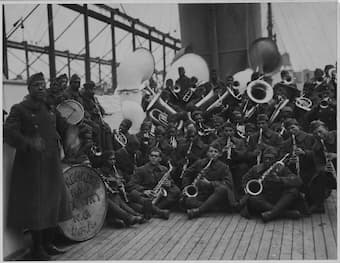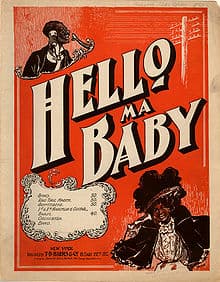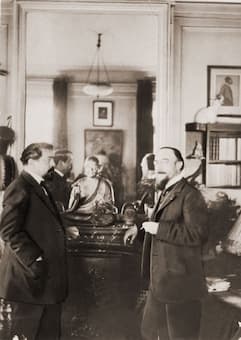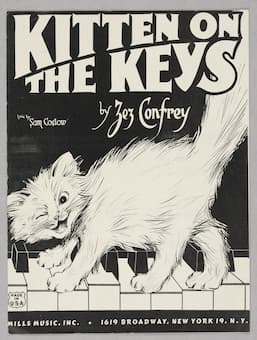Erik Satie — an eccentric, an esteemed music composer and a performing pianist of extremely anti-establishment nature is hailed as a genius in contemporary classical music. Versatile as he was, Satie composed theatre and ballet music and performed for café and cabaret audiences. Often criticized by critics for being dull, his music compositions were original, humorous, weird, and minimalistic. Termed as furniture music, his works are said to be the reflection of everyday life. However, it was only after his death that his achievements were acknowledged and he was hailed a genius. Simple in structure and marked by an innovative and characteristic wit, his works were explicitly anti-romantic and anti-impressionistic. His works were also a kind of revolt against the works of Romantic composers such as Richard Wagner, whose works were jazzier than his. He left a scarce work behind as most of his works were composed for piano. However, his revolutionary usage of bitonal and polytonal notes became a trademark of the twentieth century music.
Erik Satie’s Childhood and Early Life
Satie was born on 17 May 1866 in London to Scottish parents Alfred Satie and Jane Leslie. Satie was born in Honfleur in Normandy, the home that is open to public now. When Satie was just four years old, his family relocated to Paris, where his father was offered the job of a translator. After his mother passed away in 1872, he and his younger brother Conrad was send to Honfleur to live with his grandparents. It was from here that he received his first lessons in music from a local organist. When his grand mother passed away in 1878, he and his brother were reunited with their father in Paris. His father remarried a piano teacher after a short period. The year 1880’s witnessed Satie publishing salon compositions by his stepmother and by himself.
In 1879, Satie joined Paris Conservatoire where his tutors branded him as incompetent and useless. Georges Mathias, who was his piano professor, labeled his piano technique as ‘insignificant, ‘laborious’ and ‘worthless’. Emile Descombes, another piano teacher at the Conservatoire, tagged him as the most indolent student. After he was sent back home for two and a half years, he rejoined the Conservatoire at the end of 1885, but failed to create a positive impression on his teachers. As a result, he decided to quit music and take up a military career a. However, his military career was short lived as he was infected with bronchitis and was discharged of military duties within a few months.
Career
In 1887, Satie left home for Montmartre. During this time, he also got his first compositions published by his father. He also published his “Gymnopedies”, which was followed by publishing compositions in the same vein. In this period, he befriended Claude Debussy. By 1891, he became the composer and chapel master of Rosicrucian Order, of which the leader was Sar Josephin Peladan. Here, he produced many compositions.
The middle of 1892 witnessed him composing the first pieces in a compositional system of his making, publishing his first hoax and giving incidental music to a chivalric esoteric play. In 1893, he met Maurice Ravel with Satie’s style emerging in the first composition of the youngster. One of his compositions during that time called ‘vexations’ remained undisclosed until his death. By the time the year ended, he had founded ‘The Metropolitan Church of the Leading Christ’. Being its only member, he composed ‘Grande Messe’ and penned numerous pamphlets, letters and articles, which showed his self-assuredness in religious and artistic matters.
By the middle of 1896, he was forced to move to a much smaller lodging as he was deprived of all financial means. He moved to a place called Rue Cortot and to Arcueil in 1897, a suburb that is five kilometers from the central part of Paris. During this time, he restored the lost relationship with his brother, Conrad for the sake of practical and financial matters. He also disclosed some of his inner emotions and feelings and those letters validated the religious ideas, which Satie had set aside.
From the year 1899, he started performing as a cabaret pianist, finding his feet in over hundred compositions of well-liked music for piano and adding some of his contributions. Most of them became immensely popular. However, in the later phases, Satie rejected all these cabaret music as contemptible and against his nature as it was composed just for the time being, especially for income.
In October 1905, Satie joined an Organisation in Paris to study classical counterpoint while continuing the cabaret work. The students and professors there were as dumbfounded when they heard of his intentions to return to the classrooms. Satie attended the classes as a respected pupil in Schola for almost five years, receiving the diploma in 1908. A few of his classroom counterpoint exercises were published posthumously.
Most of his publications validate that Satie did not reject Romanticism, but it’s certain aspects. Through this career, he totally rejected the concept of musical development. According to him, a composer must not take more time from the public than it is strictly essential. Satie also avoided melodrama strictly in his music. He had also written works, which are a parody of that genre.
Meanwhile, Satie became a member of radical socialist party, started associating with the Arcueil community, and developed some interesting hobbies such as maintaining a collection of imaginary buildings, most of which were described as made if metal. Occasionally, he would make anonymous announcements in journals offering some of these buildings for rent or for sale.
Height Of Success
In 1912, his miniatures for piano became quite popular, which he wrote and published in the following years. He also had a habit of maintaining scores for the compositions with all kinds of written remarks.
However, the success in Satie’s life was not due to the popularity of his piano pieces, but due to Ravel, who inspired the characteristics of Satie’s remaining years. In 1910, a group of young musicians who were based around Ravel stated their preference for the works of Satie, reaffirming the idea that Satie is a forerunner of Debussy. In the initial phases, Satie was pleased about the public attention that his works received. However, when he realized that his recent works were being overlooked, he sought the help of other artists with better ideas. Thus, he started his association with Roland-Manuel, Georges Auric and Jean Cocteau. Along with Roland-Manuel, he started to publicize his thoughts with more irony than he had done before. In 1915, he met Jean Cocteau with whom he started working on the production of Shakespeare’s “A midsummer Night’s Dream”. In 1916, he and Cocteau worked jointly on a ballet “Parade”, which had its premiere in 1917. The costumes of the ballet were done by Pablo Picasso and choreographed by Leonide Massine. Through Picasso, he became quite acquainted with other cubists such as Georges Braque.
Satie formed a group along with Georges Auric, Louis Durey, Arthur Honegger, and Germaine Tailleferre after writing “Parade”. However, in September 1918, he withdrew from the group without any formal explanation. In 1919, Satie became associated with Tristan Tzara, who was the initiator of Dada Movement and met artists like Francis Picabia and Andre Derain. In Zurich, Dadaists made Satie the honorary member of their organisation. He also contributed to the movement through works such as ‘The Gift’ in 1921. In 1924, his second ballet, which was staged by Picabia, led to an uproar in Paris. However, the work that reflected his true spiritual legacy was ‘Socrate’ in 1919.
Satie also tried to evade the influence of composers like Wagner and literally led a revolt against them in the early phases of the 20th century. Dryness was the characteristic of his works, which he tried to escape through writing pieces with silly titles such as ‘Limp Preludes for a Dog’.After he was accused of writing music without any form, Satie composed ‘Trois morceaux en forme de poire’ ("Three Pieces in the Pear Form").He was also the godfather of a group named ‘Les Six’, which consisted of loosely knit band of composers working under Cocteau to get rid of the heavy Germanic and the impressionistic influences on current music.This group intended to emphasize straightforwardness, briefness and a commitment to the themes of modern music.
Personal Life
Satie and Suzanne Valadon had a long courtship. Though they did not marry, they started living in adjacent rooms. However, she moved away ending a six month relationship, leaving Satie heartbroken. Suzanne was the only women with whom Satie had an intense relationship.
Death
Satie passed away on 1 July 1925, due to liver cirrhosis in Paris in France, which was mainly because of excessive drinking.





.jpg)